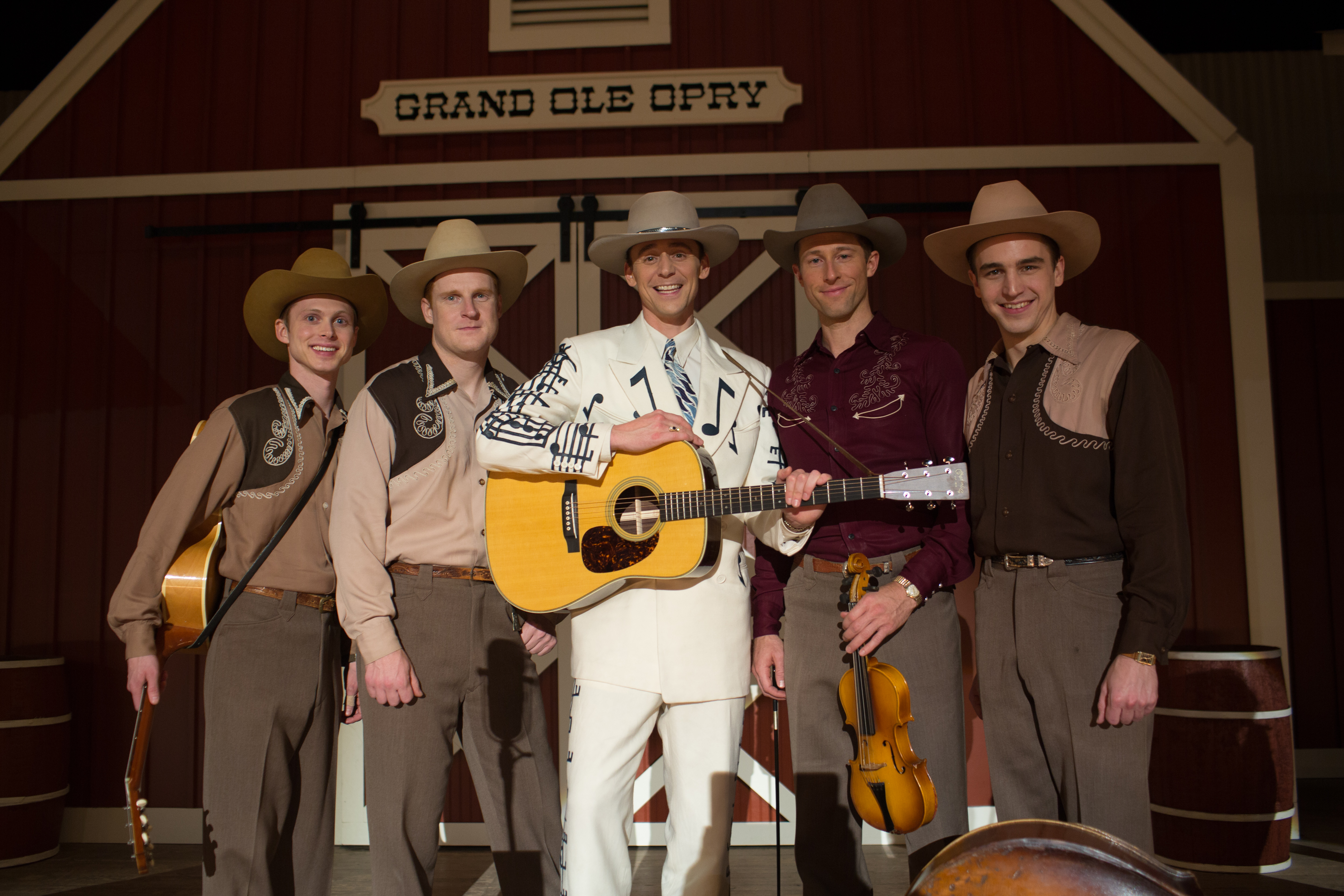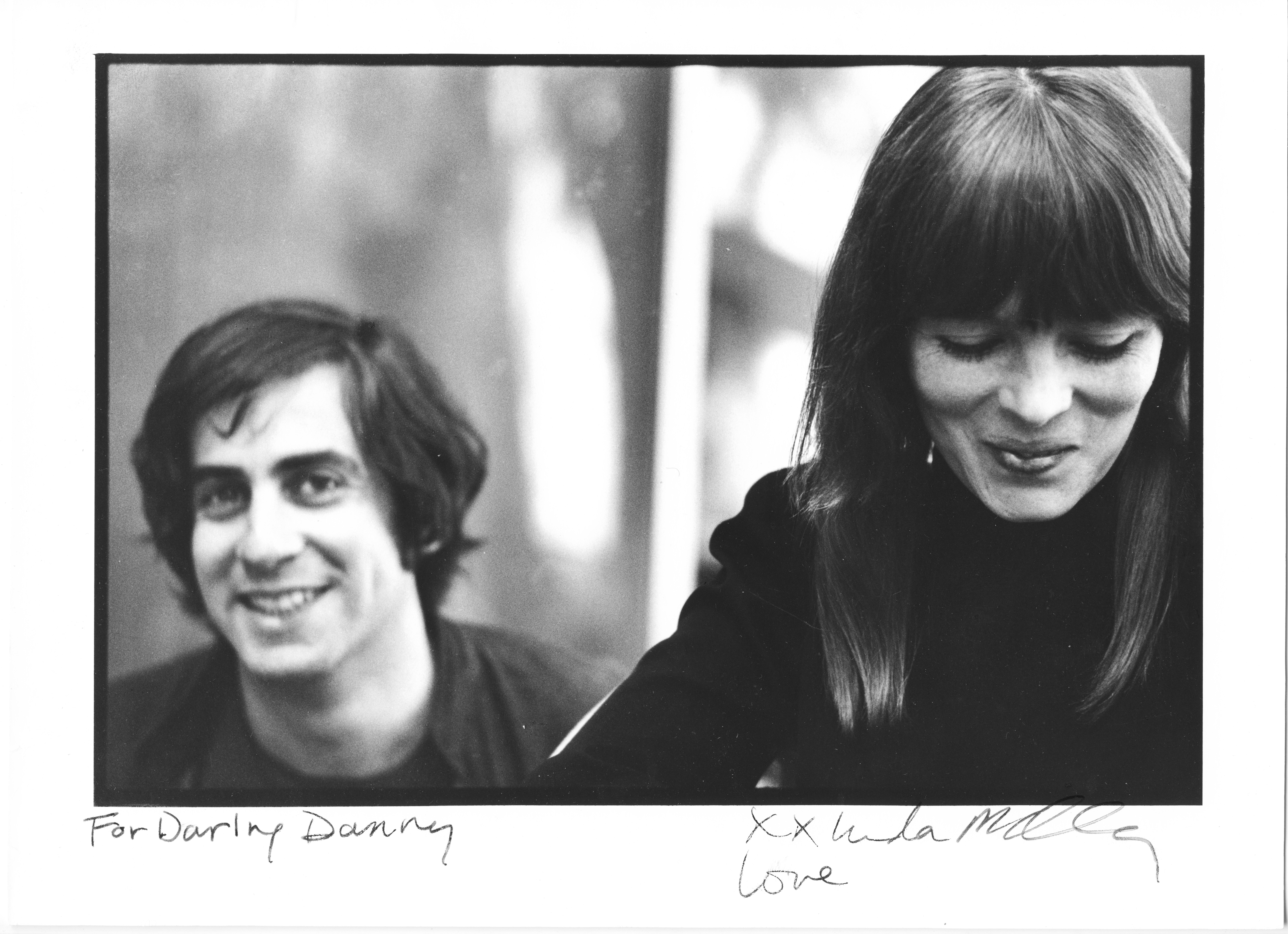I Saw The Light
 Friday, April 1, 2016 at 11:50AM
Friday, April 1, 2016 at 11:50AM Sony Pictures Classics
When Hank Williams set out to get famous, Hillbilly was a niche. His 35 Top Ten songs in only six years turned it into mainstream Country. Nonstop night-after-night gigs, the amphetamines that fueled them, the barbiturates that brought sleep afterward and the liquor that made life bearable in between triggered the heart attack that killed Hank – at only 29 – in the back of his Cadillac on a twolane blacktop on the way to another show. With his skinny elegant frame, bottomless Satanic eyes, pursed redneck mouth and astonishing bespoke cowboy outfits, Williams provided the (white) wild-ass prototype for all the Dionysian self-destructives who followed him into popular music.
 Tom Hiddleston as Hank Williams with the Drifting Cowboys Photo by Sam Emerson, Courtesy of Sony Pictures Classics
Tom Hiddleston as Hank Williams with the Drifting Cowboys Photo by Sam Emerson, Courtesy of Sony Pictures Classics
But Williams had something they – and pretty much every other songwriter in history – lacked: A genius for setting nursery rhymes of universal sadness and longing to jaunty, unforgettable melodies. Dude had some appetites on him, too, and the determination to indulge them. In other words, Williams was a Colossus, and now ripe for a biopic.
What shines, and makes the film worth seeing, is an immersive, mesmerizing star turn by English actor Tom Hiddleston. He perfectly captures Williams’ self-contained suspicion, damn-fool contrary country pride and unselfconscious joy at performing. Hiddleston sings Hank’s tunes himself. He’s credible and it’s a relief not to hear a dead man’s voice coming out of an actor’s mouth. Hiddleston's onscreen band plays and recorded using period instruments, amplifiers and techniques, guided by Nashville curmudgeon and self-appointed guardian of country-roots authenticity Rodney Crowell. The songs sound good.
Williams had outrageous style. One visit to the Country Music Hall of Fame will convince you he could match Miles Davis, Gram Parsons or Sly Stone for elegant flamboyance and that’s saying something. Hiddleston wears suits embroidered with giant musical notes and fringed white-satin cowboy shirts with natural insouciance. He ambles onstage in these deranged wonders as easy as if in his PJs – to the stage and stardom born. Hiddleston finds the inner fire that lit up Williams when he sang. Hank’s tragic cycle: Fully human only when performing, but the toils of performing killed him. It’s a formula most music-martyr films indulge, but seems hard to argue with here.
 Tom Hiddleston as Hank Williams Photo by Sam Emerson, Courtesy of Sony Pictures Classics
Tom Hiddleston as Hank Williams Photo by Sam Emerson, Courtesy of Sony Pictures Classics
Director Marc Abraham’s obsessively researched portrait never quite escapes biopic conventions. The production design captures the subtleties and status/class motifs of the clothing, cars, instruments, modes of speech, mannerisms and showbiz gestalts of the era, but all that detail feels oddly pro forma and unspecific. None of it illuminates Williams’ prodigious inner demons. He does stuff and folks around him shake their heads. “Whoo-eee, that boy’s a puzzlement – even to hisself !” is about as much of a character reveal as the screenplay provides.
Predictably, the story posits woman-trouble as the engine of Hank’s drinkin’, druggin’ & whorin’. That legendary whorin’ all takes place offstage; the multiple Williams’ descendants listed in the Thank You credits may account for this relatively sanitized saga. Elizabeth Olsen, despite her astonishing eyes (what Godard could do with her face!) never quite convinces as Hank’s hard-ass wife Audrey. She’s at least granted more depth than Maddie Hasson and Wren Schmidt. Though based on real folks, they come off as only window-dressing, underwritten story-fodder. For reasons never made clear or credible, Hank’s instantly smitten with one but not the other, even though the other will bear his child. The actresses compensate for their superficial roles by being made-up, done-up and coiffed to a fare-thee-well regardless of plot circumstances. Even the redoubtable Cherry Jones gets reduced to a stereotype – the dangerously over-protective southern mama.
 (The mighty, mighty) Cherry Jones as Lillie Williams Photo by Sam Emerson, Courtesy of Sony Pictures Classics
(The mighty, mighty) Cherry Jones as Lillie Williams Photo by Sam Emerson, Courtesy of Sony Pictures Classics
In the opening shot, Hiddleston leans against a stool, singing acapella in an iconic but false-seeming pose. He’s bathed in shafts of beatific light. The camera circles as he sings. As the song comes to a close and the camera draws near, the light recedes to reveal the human face of this clearly angelic – that is, long-dead – figure. It’s the only expressive or metaphoric shot in a film of quotidian naturalism and sets an artificial tone. It’s the kind of moment producers impose on a finished picture they think doesn’t show its star as sufficiently starry or its subject as sufficiently mythical.
Abraham refuses, to his credit, to traffic in visual or narrative myth. Weirdly, though, he never fully exploits the genius of Michael Mann’s go-to cinematographer Dante Spinotti (Public Enemies, Heat; Manhunter). Abraham’s frames are simple prosceniums from which actors declaim, like expensive television. The absence of visual style and the awkward editing – especially of Hank achieving his lifelong dream of singing on the Grand Ole Opry – drag the story down. So does the labored device of cutting to B/W “interviews” of Hank’s collaborators.
The ending – uh, sorry: Hank died in his car – comes off frustratingly matter of fact. There’s little sense of untimely tragedy. As with other crucial moments, Abraham’s laudably sincere love of the music and of his subject cannot compensate for his pedestrian storytelling.

